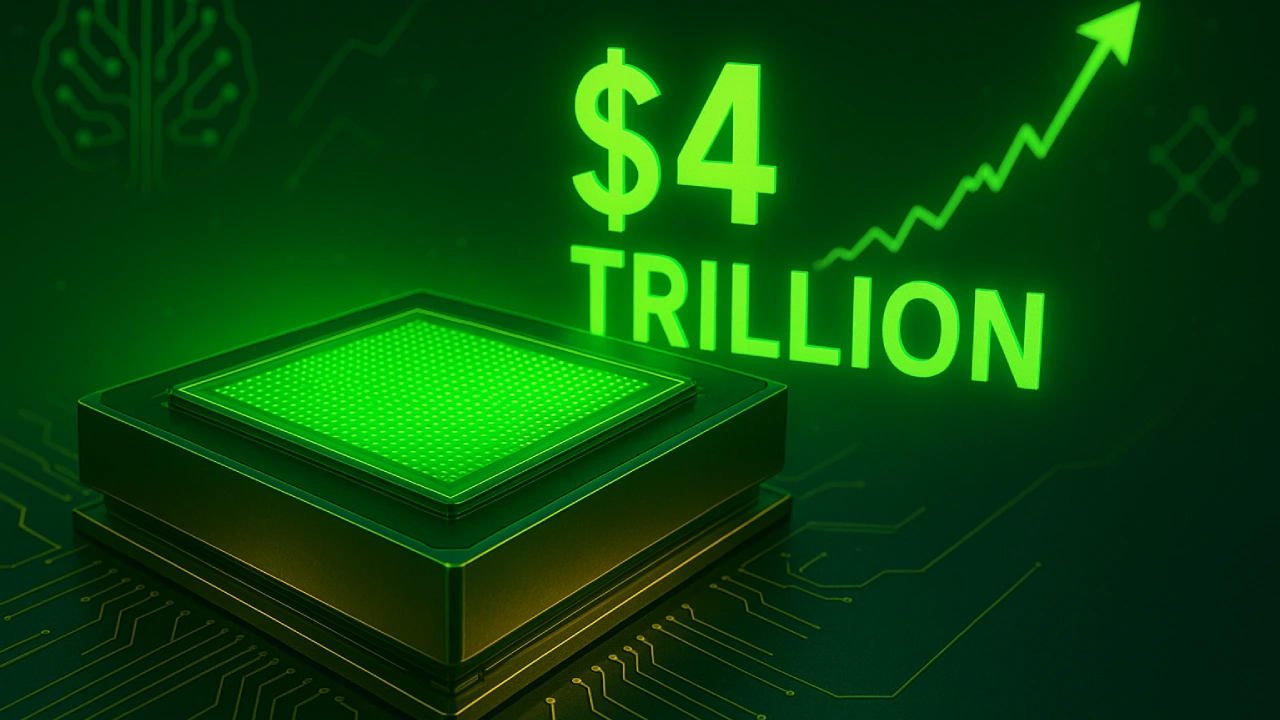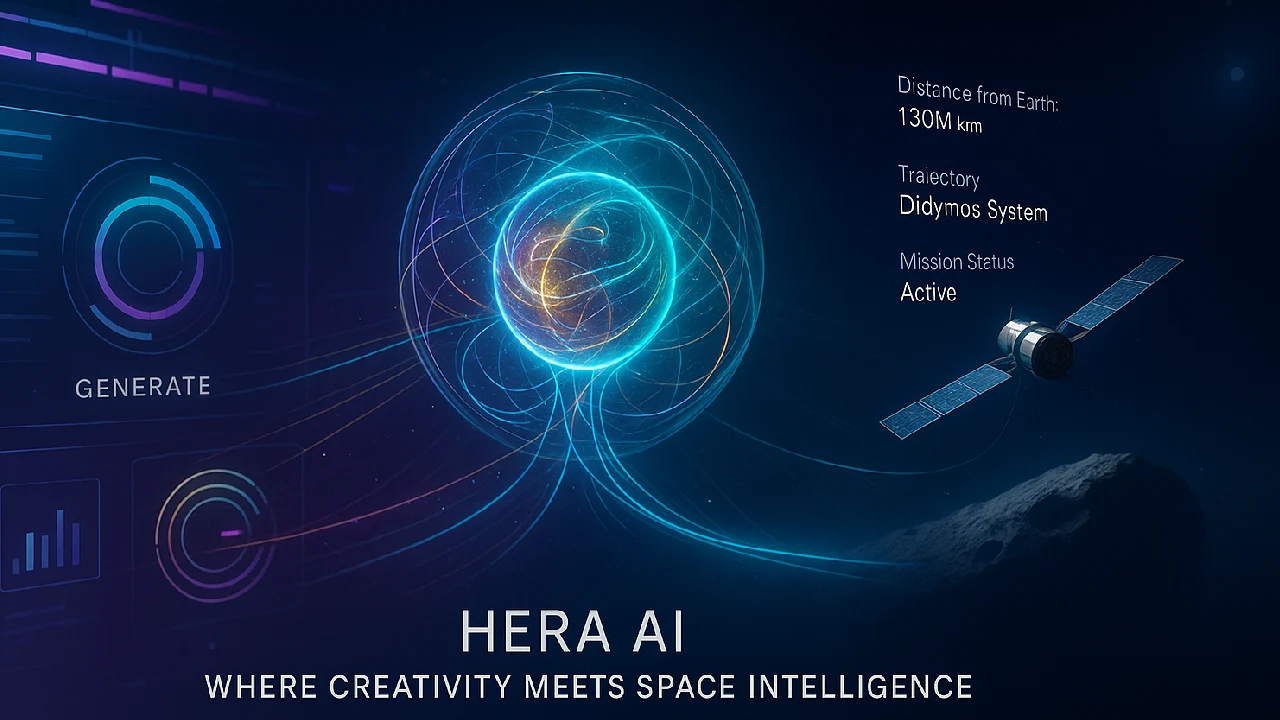Nvidia has become the first semiconductor company in history to reach a $4 trillion market capitalization, marking a pivotal moment in tech and financial history. From dominating the GPU market to powering nearly every major AI model on the planet, Nvidia’s rise is the result of strategic innovations, billion-dollar deals, and unstoppable global AI demand.
In this blog, we’ll break down the Top 10 Nvidia products, Top 10 strategic deals, and Top 10 key growth factors that fueled this historic valuation.
Top 10 Nvidia Products That Shaped Its $4 Trillion Journey
| Product | Launch Year | Key Impact |
|---|---|---|
| NVIDIA A100 GPU (Ampere) | 2020 | Unified AI training/inference, 20× performance leap, core to data center growth. |
| NVIDIA H100 GPU (Hopper) | 2022 | Built for large language models with FP8 precision, key driver in hyperscale AI. |
| GeForce RTX 50 Series (Blackwell) | 2025 | Gaming + generative AI integration, brings AI inference to consumer GPUs. |
| NVIDIA Grace CPU Superchip | 2022 | 144-core Arm CPU, pairs with Hopper for full-stack AI compute. |
| DGX AI Supercomputers (A100/H100) | 2020/2023 | Turnkey supercomputers adopted for enterprise AI workloads. |
| NVIDIA DRIVE AGX Orin | 2019+ | AI platform for autonomous vehicles; used by Toyota and others. |
| NVIDIA Omniverse + Cosmos | 2020/2025 | Digital twin and generative simulation platforms for robotics and industrial AI. |
| Jetson Edge AI (Orin Nano Super) | 2024 | Compact AI modules for edge devices like drones and robots. |
| NVIDIA CUDA Platform | 2006+ | Software layer locking in devs, accelerates AI R&D on Nvidia GPUs. |
| BlueField DPUs | 2019 (via Mellanox) | Integrated networking offload chips, completing Nvidia’s AI compute stack. |
Top 10 Nvidia Deals That Supercharged Growth
| Year | Deal | Type | Partners/Targets | Business Impact |
|---|---|---|---|---|
| 2019 | Mellanox Acquisition | Acquisition | Mellanox | $6.9B deal unified GPU + network stacks for data centers. |
| 2020 | Arm Deal Attempt | Failed Bid | Arm (SoftBank) | Signaled ambition for CPU dominance; blocked by regulators. |
| 2024 | Run:AI Acquisition | Acquisition | Run:AI | Orchestration tools enhanced Nvidia’s enterprise AI suite. |
| 2024 | Deci AI Acquisition | Acquisition | Deci | Optimized model tuning for cloud/edge AI apps. |
| 2024 | Shoreline & OctoML | Acquisitions | Kubernetes & AI ops firms | Strengthened cloud and AI deployment capabilities. |
| 2024 | AWS Collaboration | Strategic | Amazon | Grace Blackwell chips & DGX Cloud embedded in AWS EC2. |
| 2024 | Microsoft Azure Deal | Strategic | Microsoft | Expanded DGX Cloud & AI Enterprise across Azure. |
| 2025 | Oracle Partnership | Strategic | Oracle | Nvidia stack natively integrated into Oracle Cloud Infrastructure (OCI). |
| 2025 | Oracle–OpenAI Contract | Customer | OpenAI | $30B/year AI cloud deal, indirectly securing Nvidia GPU sales. |
| 2025 | OpenAI & xAI Investment | Investment | OpenAI, xAI | Strengthened relationships with AI market leaders. |
Top 10 Growth Factors Behind Nvidia’s Market Domination
1. Generative AI Explosion
From ChatGPT to custom enterprise LLMs, AI use skyrocketed. Nvidia chips became the backbone of generative AI infrastructure worldwide.
2. Data Center & Cloud Expansion
Every hyperscaler (Microsoft, AWS, Google, Meta) is scaling AI clusters. McKinsey estimates 33% YoY growth in AI-ready data center power demand through 2030.
3. GPU Market Monopoly
With ~98% of the data center GPU market, Nvidia essentially owns AI compute. Every AI boom translates directly into Nvidia revenue.
4. Integrated AI Compute Platforms
Rather than just selling chips, Nvidia now sells end-to-end systems like DGX and NVL72 – training-ready “AI factories” with optimized CPU+GPU+interconnect.
5. Strong Software Ecosystem (CUDA, AI Enterprise, NIM)
Nvidia’s full-stack software (CUDA, TensorRT, NIM microservices) is now essential to modern AI workloads, locking in customers and developers.
6. AI at the Edge (Autonomous Vehicles & Robotics)
With DRIVE and Jetson, Nvidia extends its reach into cars, factories, and drones. Toyota and others are building smart vehicles on Nvidia’s platform.
7. Strategic Partnerships
Multi-billion-dollar collaborations with AWS, Microsoft, Oracle, and OpenAI amplify Nvidia’s infrastructure footprint and long-term demand.
8. Performance Leap Every Generation
Each new chip, including Blackwell, Hopper, and Ampere, roughly doubles AI throughput, which justifies rapid upgrades and encourages wider AI adoption.
9. Stable Gaming Business
While AI dominates headlines, Nvidia’s GeForce GPUs still lead the $10–12B/yr gaming market, funding R&D and brand expansion.
10. Global AI Investment Climate
With the CHIPS Act and global AI funding, Nvidia is uniquely positioned to benefit from government and VC capital pouring into AI infrastructure.
Conclusion: Why Nvidia Became a $4 Trillion Giant
Nvidia’s historic rise is no accident. It’s the result of years of visionary product development, high-stakes deals, and perfect timing with the AI revolution. Whether it’s building AI factories, autonomous driving brains, or generative simulation platforms, Nvidia isn’t just a GPU company—it’s the foundation of the AI age.
As AI reshapes every industry, Nvidia sits at the heart of the storm, powering the future of computing.







